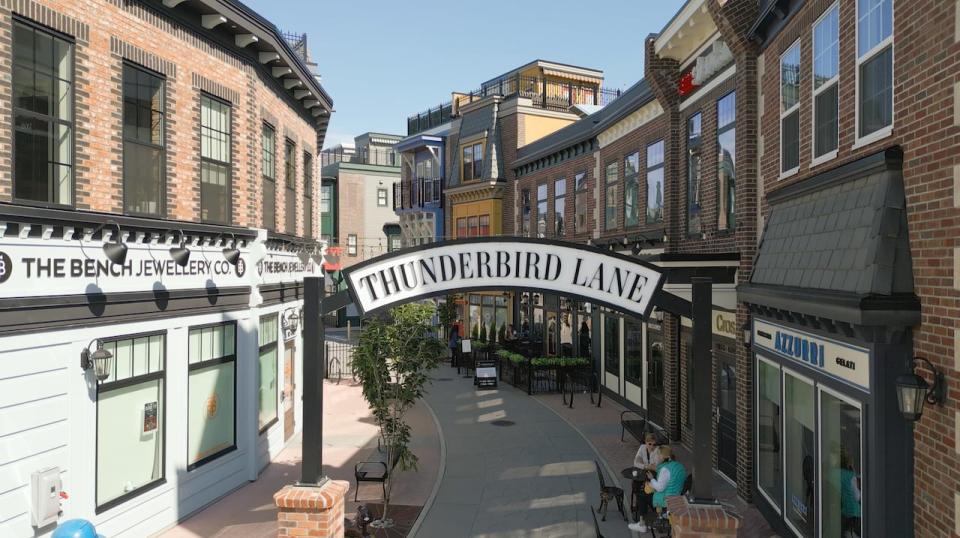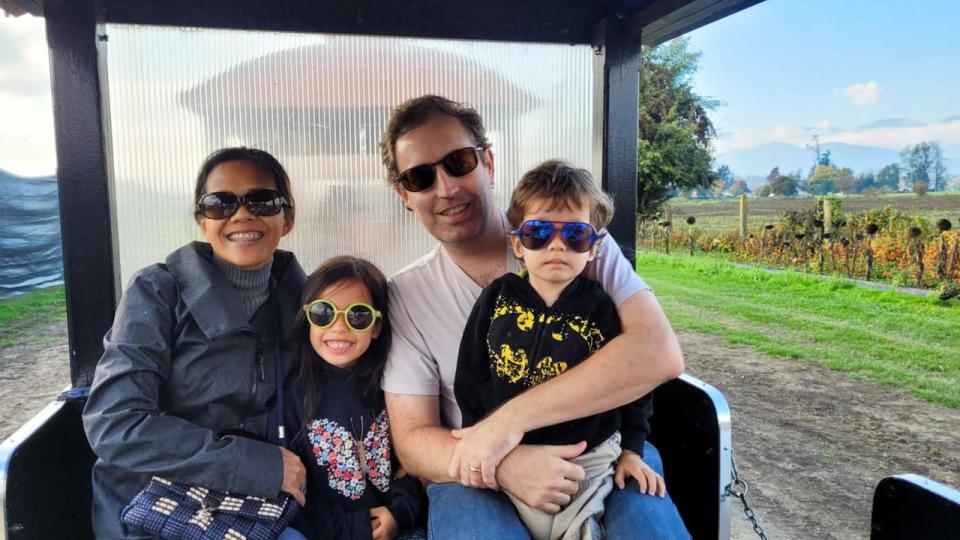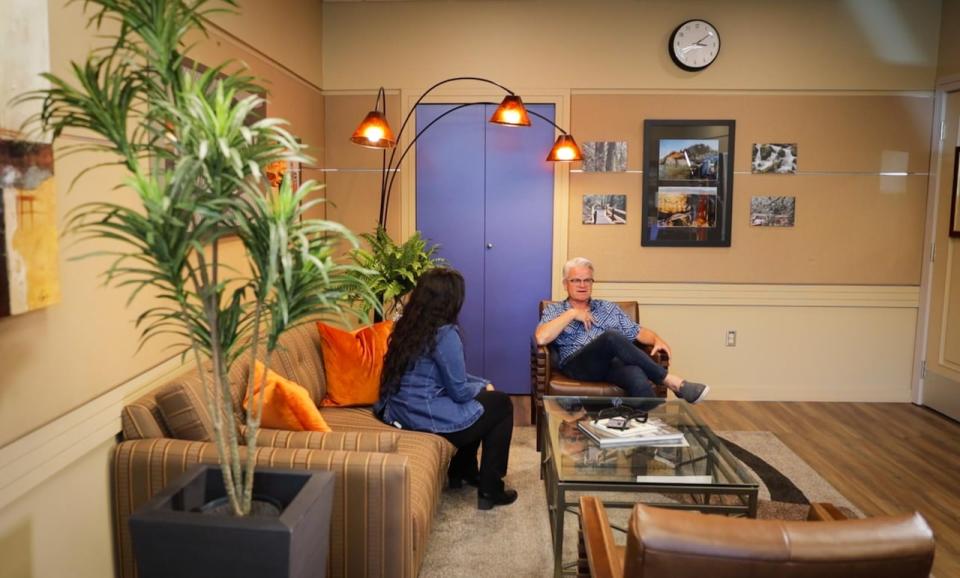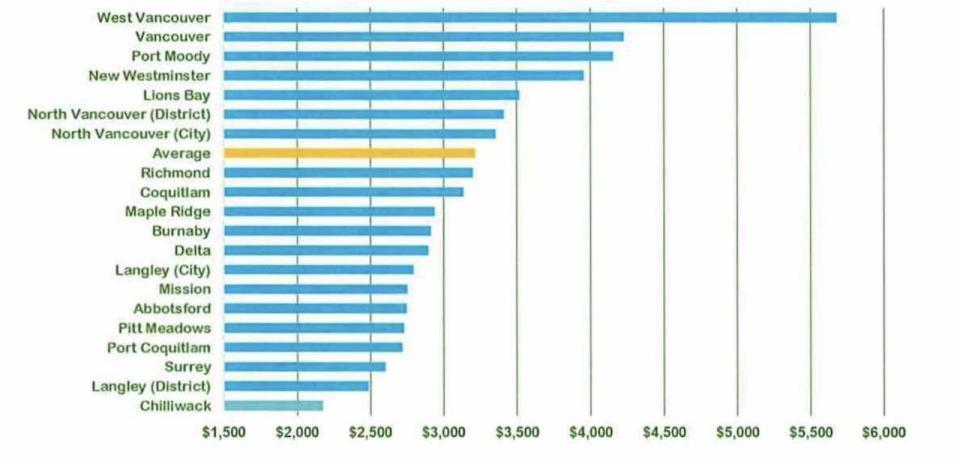Chilliwack attracts families seeking more affordable way of life
At Hillary Fortin's new home in Chilliwack, B.C., her two dachshunds pitter-patter on the hardwood floor as she tidies up her son's storybooks.
After living in Metro Vancouver for 30 years, the chartered professional accountant says she never thought she and her husband would end up living in the Fraser Valley city, about 100 kilometres east of Vancouver, known for its agricultural heritage and quaint, rural vibes.
"I always thought, oh, that's, you know, a small town, very little opportunity, " she said.
But after having their first child in 2023, priorities changed.
Fortin, 34, is among a surge of people who have traded the big city for a quieter, more affordable life in Chilliwack — which, from 2016 to 2021, was Canada's second fastest growing census metropolitan area after Kelowna, with 12.1 per cent growth, according to Statistics Canada.
Chilliwack's population is expected to grow to 132,000 by 2035, according to the city website — an increase of more than 40 per cent from the 2021 census figure of 93,000.
Experts say high costs of living, and unaffordable housing especially, are making mid-sized cities like those in the Fraser Valley more desirable than urban centres like Vancouver.
A demographic profile by the City of Chilliwack showed people from within B.C. made up 25 per cent of the city's population growth prior to 2010. That proportion had increased to more than 50 per cent between 2019 and 2022.
The same profile also says two-thirds of the city's population growth since 2011 can be attributed to the age groups of 30-39 and 60-79. A simultaneous increase in residents under 19 suggests many younger incomers are bringing children with them.
That growth is causing local challenges, including higher property tax, increased traffic and land pressure as the demand for housing increases.
But many locals old and new say it's worth it for the affordable housing and revitalized attractions that are among key factors fuelling Chilliwack's boom.
WATCH | Chilliwack attracts families seeking a more affordable future:
As well as diverse housing there are new shops and easy access to outdoor recreation, says Sarah Toop, a Realtor and lifelong Chilliwack resident.
"The town is a lot more fun than when I grew up," said Toop, who says her family settled in the area as dairy farmers in 1873.
In her 13-year real estate career, she says she's conducted over 1,500 sales — with around 700 of those happening in the last three years.
"Chilliwack is exploding," Toop said.
'More square footage for your buck'
Fortin says she and her husband, a construction manager, initially considered buying a townhouse in Coquitlam or New Westminster. Ultimately, moving to Chilliwack allowed them to buy a five-bedroom home with a secondary suite and a backyard.
"You could get way more square footage for your buck," said Fortin.

In May 2024, the median list price of single-family homes was $945,940 in Chilliwack compared to $1,546,144 in Coquitlam, according to the Houseful real estate site.
With family support for their down payment, the couple is now building equity having previously rented two- or three-bedroom apartments in Vancouver — sometimes with a roommate. Daycare costs are half what they saw in Vancouver, Fortin says, while gas is also cheaper in the Valley.
She says the move was a surprise to her family and friends considering her parents left the area in the 1990s to raise her in Metro Vancouver so she would have more opportunities.
But Fortin said, "there's opportunity for our age demographic here. We don't need to be in the city."
She says she's also found a larger sense of community in Chilliwack.
At the city's newly revitalized downtown neighbourhood, District 1881 — which has a historic European village feel with restaurants, shops, offices and apartments — Fortin connected with moms and entrepreneurs and eventually opened a pop-up store to sell locally made products.

"I really was craving that connection. I didn't necessarily have it in the city," she said.
Fortin concedes the trade-off has been longer commutes. Her husband often works in Burnaby — and when she returns to work she will be on a hybrid work schedule, meaning commutes to Vancouver.
Flexible work, shifting demographics
That wasn't the case for James and Raquel Narraway, who moved to Chilliwack from Maple Ridge with their two kids in 2020 after he began working from home permanently in his marketing job.
"We have more space, we are closer to family, we're close to nature. We just love being here," said Raquel, 39, who recently began working as a real estate agent.
The couple said they moved from a 1,300-square-foot townhouse into a 3,300-square-foot detached home.

The COVID-19 pandemic and consequent move for many to work-from-home or hybrid work arrangements has played a large part in Chilliwack's growth, says Afia Raja, associate professor at the Department of Planning, Geography and Environmental Sciences at the University of the Fraser Valley.
After looking for trends in municipal data between 2016 and 2021 and interviewing around 50 residents, Raja and her students found online education, remote and hybrid work, and more living space were large factors for new residents.
Raja says demographic shifts also show Chilliwack becoming more multicultural, with the South Asian population doubling and large increases in Chinese, Black and Filipino residents.
However, Raja notes that as mid-size cities like Chilliwack grow, their challenges — such as traffic, housing density and busy schools — become more pronounced.
"Do we have education available educational facilities? Do we have health care available? Do we have enough job opportunities in those medium- or small-sized cities? So these are very big questions which people make a tradeoff [on] when they are choosing the kind of housing they are going to go to," said Raja.
Growing pains
Sitting in his office with renderings of new developments covering his wall, Mayor Ken Popove says his city is booming — from a new Red Bull headquarters, a wastewater treatment plant expansion, new additions to the mall, to more apartments springing up.
But he also notes several continuing challenges, including how 67 per cent of the city's land is part of B.C.'s Agricultural Land Reserve, limiting space for new homes and industry — hence the construction of more apartments.
In light of recent provincewide legislation pushing for denser housing, Popove has complained that Chilliwack is no longer permitted to hold public hearings for residential development rezoning applications that align with the city's 2040 Official Community Plan, and criticized the province's "one-size-fits-all approach."
A statement earlier this month said council "reluctantly approved" bylaw amendments to allow three to four units on properties zoned for single-detached and duplex housing.

The city also says it needs more funding to expand transit, while increasing school capacity could become a future issue.
But while Chilliwack had a 7.32 per cent property tax increase for 2024 — its highest hike in decades, partly due to inflation and infrastructure projects — it still had the lowest average property tax bill for a representative home among 19 B.C. communities, according to provincial data.
"There's all kinds of construction going on. And it just bodes well with the long-term plan of what we have here in Chilliwack just to make it as affordable as can be," said Popove.
"At the end of the day, I think we've done a hell of a job here."

He concedes it can be "kind of a stinky town — you know, with all the farming. Guilty as charged.
"But turn north or turn south [off Highway 1] and see what it's got going on."

 Yahoo News
Yahoo News 
